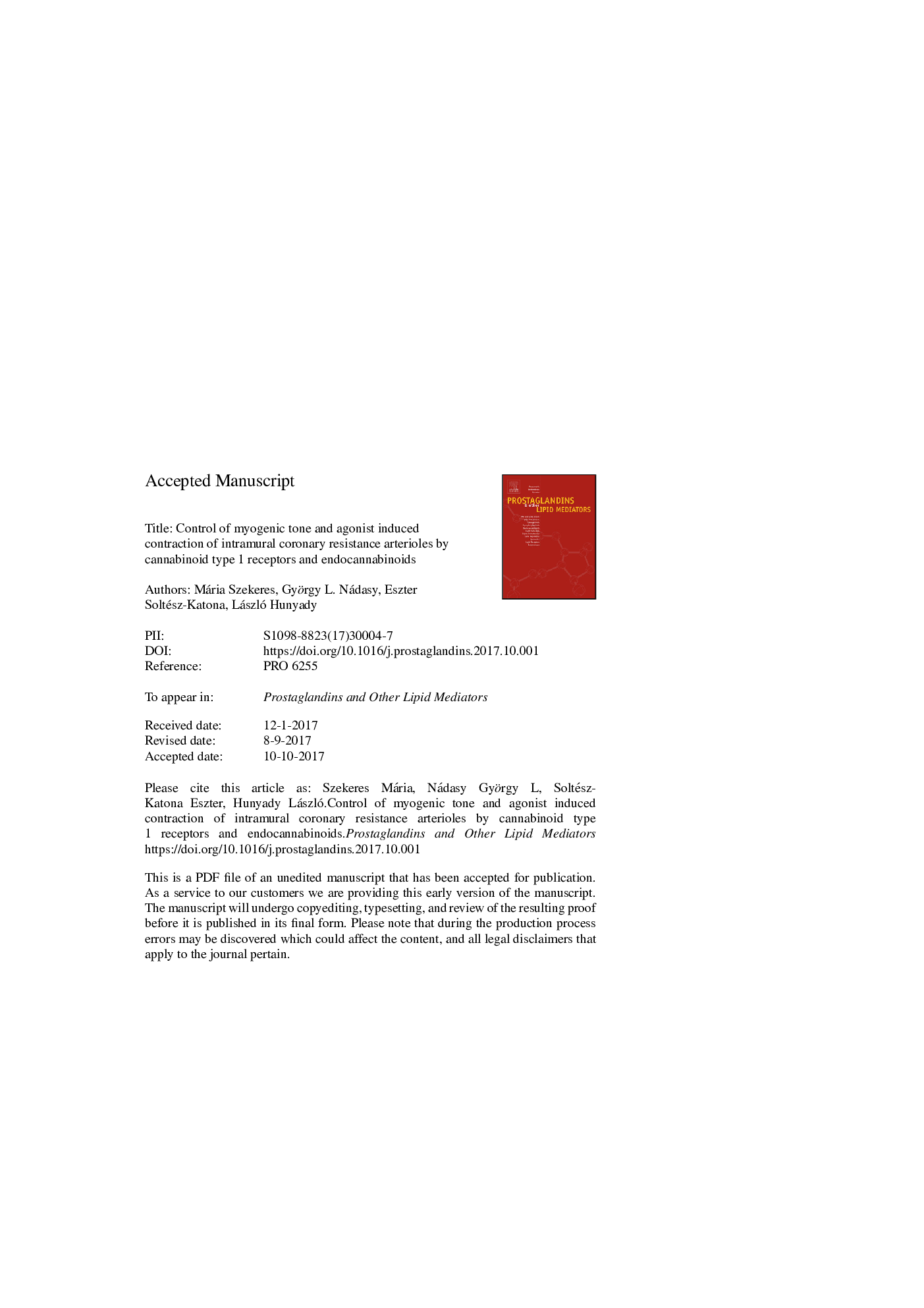| Article ID | Journal | Published Year | Pages | File Type |
|---|---|---|---|---|
| 8359128 | Prostaglandins & Other Lipid Mediators | 2018 | 30 Pages |
Abstract
It was tested whether intrinsic CB1R activation modifies myogenic and agonist induced contraction of intramural coronary resistance arteries of the rat. CB1R protein was detected by immuno-histochemistry and by Western blot, its mRNA by qRT-PCR in their wall. Microsurgically prepared cylindrical coronary segments (â¼100-150 μm) developed myogenic contraction (â¼20% of relaxed luminal diameter), from which a substantial relaxation (â¼15%) in response to WIN55212 (a specific agonist of the CB1Rs) has been found. CB1R-mediated relaxation was blocked by O2050 and AM251 (neutral antagonist and inverse agonist of the CB1R, respectively) and was partially blocked by the NO synthase blocker NÏ-nitro-L-arginine. CB1R blockade enhanced myogenic tone and augmented AngII-induced vasoconstriction (from 17.8 ± 1.2 to 29.1 ± 2.9%, p < 0.05). Inhibition of diacylglycerol lipase by tetrahydrolipstatin, (inhibitor of endogenous 2-AG production) also augmented coronary vasoconstriction. These observations prove that vascular endocannabinoids are significant negative modulators of the myogenic and agonist-induced tone of intramural coronary arterioles acting through CB1Rs.
Keywords
ERKPLCCB1R2-AGLNAmonoacylglycerolMAGqRT-PCR2-arachidonoylglycerolAT1RTHCVSMCThlNω-nitro-l-arginineDAGLTetrahydrolipstatinendocannabinoidAngiotensin IIAChAcetylcholinebradykininVascular toneAng IIdiacylglycerolDAGVascular smooth muscle cellCoronary arteryphospholipase CLADdiacylglycerol lipaseknockouttype 1 cannabinoid receptorNitric oxidequantitative real-time PCRSNPleft anterior descendingCannabinoidhigh performance liquid chromatographyHPLCextracellular signal-regulated kinase
Related Topics
Life Sciences
Biochemistry, Genetics and Molecular Biology
Biochemistry
Authors
Mária Szekeres, György L. Nádasy, Eszter Soltész-Katona, László Hunyady,
